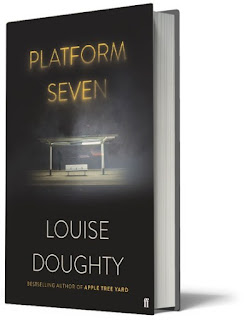Wuthering Heights is one of my all time favourite books so I started this novel later than most people, because I wasn’t sure whether I would enjoy it. I can honestly say I did. The story of Cathy and Heathcliff is so much part of our popular culture that most people have heard a version of it. If nothing else people tend to know it’s set somewhere in Yorkshire and there are a pair of doomed lovers. When I read it as a teenager I thought it was the most romantic story I’d ever heard. I even argued for Cathy as a character over Jane Eyre in my A levels; I felt Cathy was more courageous than Jane who I thought ran away from her love for Rochester. When I reread the novels at university ten years later my thinking had changed radically. I could see that the love between Cathy and Heathcliff was more of an obsession, an unhealthy and toxic relationship that ultimately destroys them and almost the next generation. Heathcliff ceased to be a romantic hero and became instead, an abusive lover guilty of domestic violence, hanging dogs and possibly a murderer. Yet, I still love the novel especially the wild setting, the psychological development of the characters from childhood and the ghostly, gothic elements. This novel had all of those elements and a mystery at its heart too.
Rowan Coleman weaves a multi-stranded story about Ponden Hall, a real place based near the Parsonage at Harworth. The hall is thought to be some of the inspiration behind Wuthering Heights, especially the box bed famous from one of the novels opening scenes where a child’s hand appears at the window to a terrified Mr Lockwood. Our heroine Trudy is an archivist and a huge fan of the Brontes and Emily in particular. Trudy and her son Will return to her childhood home of Ponden Hall after her husband Abe is tragically lost, presumed dead, in a plane crash in South America. Already struggling with grief, Trudy now has to live alongside her estranged mother who she hasn’t spoken to since she decided to marry Abe. Once there, she starts to see things she’d long forgotten. Ponden is full of apparitions and ghosts, such as the Gytrash ‘Greybeard’ who appears when a member of the Heaton family is going to die or the Ponden Child who appears tapping at the window just like Cathy, with tiny hands at the glass. Before long though, a new apparition starts to haunt Trudy, a young girl who can move furniture, change temperature in a room and is terribly angry.
What follows is a tale across three timelines, full of love and loss, and not unlike Wuthering Heights in its cruelty and scope. Trudy finds a few pages written in Emily Bronte’s hand, hidden at Ponden back in the 19th Century, by her dear friend Robert Heaton. Inside is part of a new novel and diary entries from over 200 years earlier, when troublesome women were quickly branded as witches. A girl called Agnes tells of her love for another Heaton and their ‘marriage’ to each other at a stone called the marriage hole. But Agnes is not free, she is bought by local landowner Henry Cassons and no better than a servant. Could Agnes be the spirit Trudy sees and if she haunts Ponden how come Trudy feels her presence in the library where she working as an archivist for a local businessman?
Coleman weaves the three timelines together very successfully and I truly enjoyed each woman’s story although it is Agnes and Trudy’s that are fleshed out, Emily is more of a conduit between the two. The novel plays on the age old question for fans and researchers alike; how did the Brontes write their books when they had so little experience of life outside a quiet country parsonage? The content of Emily’s book was criticised heavily by her contemporaries as having ‘unnatural passions’. In this novel, her awareness of Agnes’s terrible story is the explanation with Henry Cassons being a possible inspiration for the cruelty and obsession of Heathcliff. The book is researched well with the historical and autobiographical elements fitting well with the central character of Trudy. Her relationship with her mother is an interesting element to the present day story. Just as Emily Bronte writes with great awareness of the psychology of characters and how abusive behaviour can be be passed through the generations, Coleman handles the mother-daughter relationship with care. Their relationship is the culmination of these other stories, almost as a lesson that the generational cycle can be broken. The only criticism I have of the ending is that it’s almost too tidy. It could have been a better novel if one or two of the current storylines were ended with a sad note or even left unresolved. However, it’s a minor point in a novel full of historical detail, great storytelling and mysterious paranormal events. Far from disappointing the Bronte lover, this book adds to the tradition and history of the sister’s beautifully.










